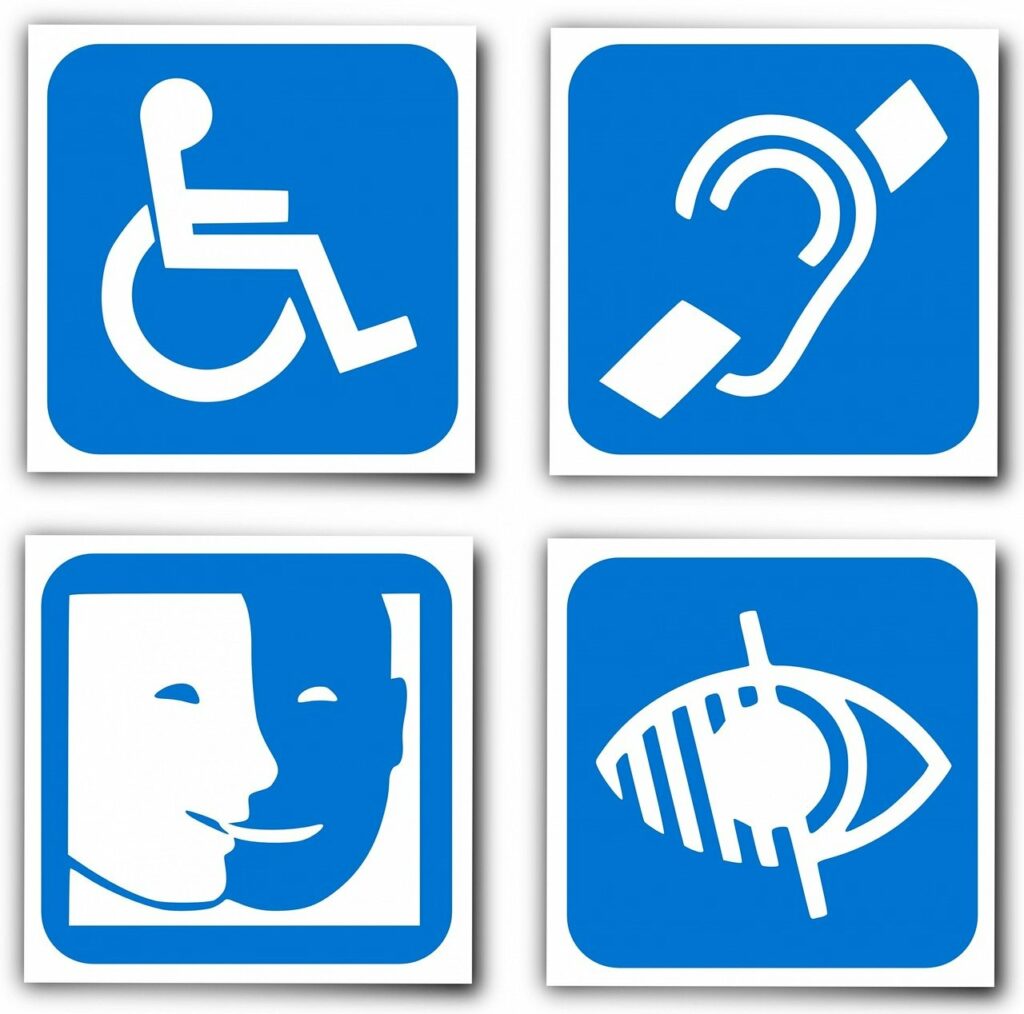Disability inclusion is an essential condition to upholding human rights, sustainable development, and peace and security. It is also central to the promise of the 2030 Agenda for Sustainable Development to leave no one behind. The commitment to realizing the rights of persons with disabilities is not only a matter of justice; it is an investment in a common future.
United Nations

There has been a notable shift in societal attitudes towards disabilities, and this shift has extended into the realm of the workplace. Employers and organisations are increasingly recognising the importance of creating an inclusive and accessible environment for individuals with disabilities. This evolving mindset not only reflects ethical considerations but also aligns with legal requirements and the potential for tapping into a diverse pool of talent.
Accessibility
One of the key aspects of addressing disabilities in the workplace is the emphasis on accessibility. This includes physical accommodations such as ramps, lifts, and accessible toilet facilities, which enable employees with mobility challenges to navigate the workspace with ease. Moreover, digital accessibility has gained significant prominence as technology becomes more integrated into daily work activities. Ensuring that digital platforms, websites, and software are designed with features like screen readers, alternative text, and keyboard navigation options is essential in promoting an inclusive work environment.
Culture
However, promoting disability inclusion goes beyond just physical and digital accessibility. It also involves creating a culture that values and supports individuals with disabilities. This cultural shift entails fostering an atmosphere of respect, empathy, and understanding. It’s about recognising that every individual brings a unique set of skills and perspectives to the table, regardless of their abilities. When employees feel valued and respected for their contributions, they are more likely to be engaged and motivated, leading to increased productivity and innovation.
Reasonable adjustments
To effectively integrate employees with disabilities into the workforce, employers should focus on reasonable adjustments. These adjustments are made to the work environment or job tasks that enable employees with disabilities to perform their roles effectively. For instance, flexible work hours or telecommuting options can be invaluable for individuals with mobility or health-related challenges. Adjusting the layout of workstations, providing assistive technologies, or assigning tasks based on an individual’s strengths can also make a substantial difference.
Legally, many countries have enacted anti-discrimination laws that protect the rights of employees with disabilities. It’s against the law for employers to discriminate against you because of a disability. The Equality Act 2010 protects you and covers areas including:
- application forms
- interview arrangements
- aptitude or proficiency tests
- job offers
- terms of employment, including pay
- promotion, transfer and training opportunities
- dismissal or redundancy
- discipline and grievances
These laws not only ensure fair treatment but also underscore the obligation of employers to make reasonable adjustments to enable disabled individuals to participate fully in the workforce.
Diversity
Embracing disabilities in the workplace also presents a business case. Diverse teams, including those composed of individuals with disabilities, tend to generate a wider range of perspectives, which can lead to more creative problem-solving and innovation. Additionally, companies that prioritise inclusion often enjoy improved employee morale, higher retention rates, and a positive reputation, thereby attracting top talent and fostering a loyal customer base.
In conclusion
Disabilities in the workplace should be approached through the lenses of inclusivity, accessibility, and adjustments. Creating an environment where employees with disabilities feel valued and supported requires a holistic effort encompassing physical, digital, and cultural aspects. While legal obligations play a role, it’s the ethical imperative and the potential benefits that truly drive the push towards a more inclusive workforce.

